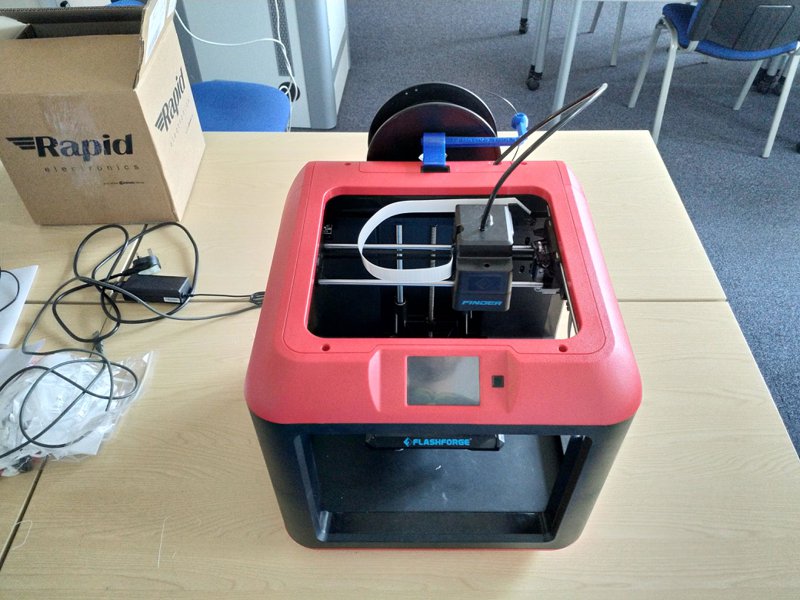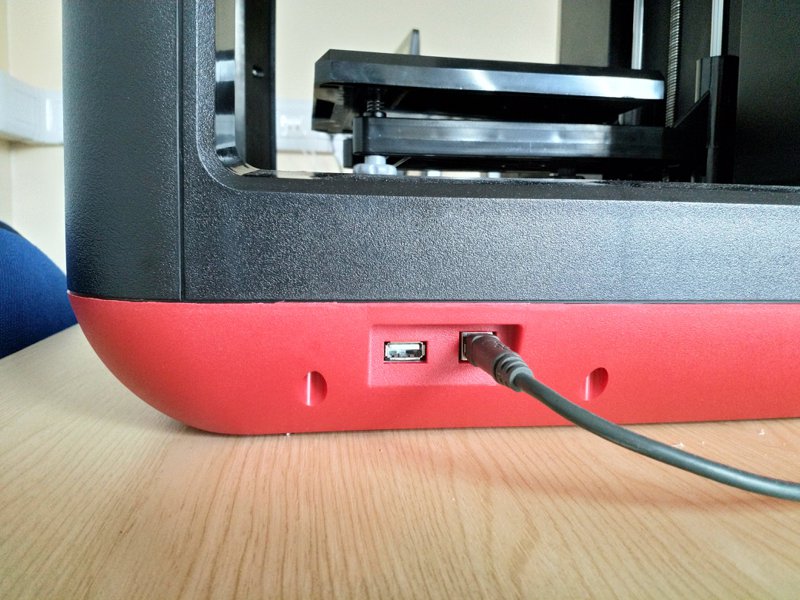FlashForge Finder

Location
The Finder is located in the undergraduate reading room, 4.05a.
Controls
The Finder is controlled with the touchscreen. The three options on the main screen are Build, Preheat and Tools.
Build will load models from the printer’s memory or models on a USB stick and start printing them.
Preheat will start the heating process of the extruder, which will save time once a model is set to print.
Tools brings up a variety of settings for the printer allowing you to load and unload filament, level the plate, and view printer properties.
How to print
The two methods to print are either using a wired connection to a PC, or a USB stick.

The wire connects into the USB port of the computer and plugs directly into the port on the lower right face of the printer. Printing via a wired connection will be automatic and allow you to set the model to print from FlashPrint.
Next to this port is the USB slot, where a USB stick can be plugged in to copy files across to the printer directly.
The printer can only read files in the .gx format, created by FlashPrint.
This can be done using the main screen of the printer and selecting ‘Build’, pressing the ‘remote device’ option, and then choosing which .gx file to print.
Manual
Troubleshooting
Models not sticking to the plate
The base of the model may be very intricate which could mean the model can’t stick to the plate
Applying pritt-stick to the plate will mean smaller based models will stick better.
You may need to add a raft or brim in FlashPrint.
Models curving at edges
If the printing plate is not completely level, models with large bases might curve up at the edges.
Calibrating the printer platform using a model like this one can help to prevent curves.
The Finder has a feature in the Tools menu to help you level the plate.
Interlocking pieces not fitting together
Sometimes if pieces are supposed to interlock, the precision of the printer means pieces won’t fit exactly
Allowing between half a millimetre and a millimetre of error means pieces should slot together nicely without causing large errors in intricate designs.